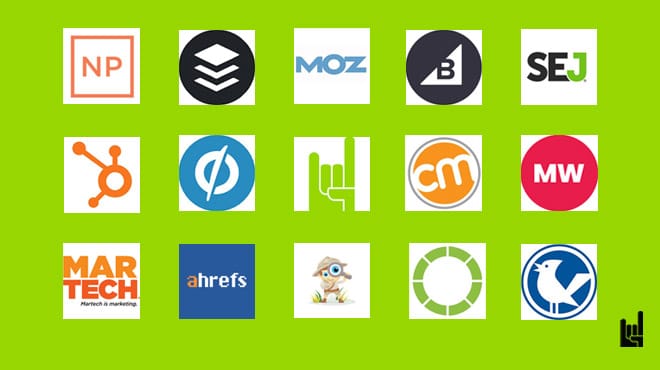Marketers require exceptional writing competence during their academic journey and career development. The capacity to present research-backed persuasive ideas is clearly an essential asset when working on research papers, lead magnets, case studies, or strategic marketing plans. Marketing demands creative abilities, analytical thought processes, data analysis, and structured communication methods.
Academic performance substantially grows from properly composed white papers because they verify full comprehension of concepts, theories, and current industry developments. Academic mastery of marketing writing skills leads to professional success in the workplace due to the necessity of developing informative reports, persuasive proposals, and analytical insights. So, let’s check some tips to boost your performance.
Understanding the Purpose of the Paper (ebook, whitepaper)
First things first – what’s a white paper? 🤔
A whitepaper or ebook is a document that communicates authority about a topic and is used as an engagement hook (a lead magnet). It combines elements of research with a combination of analysis and persuasive presentation skills.
Most white papers require marketers to apply theories in practical scenarios rather than following traditional academic writing structures. For these “assignments”, they study market statistics alongside consumer reaction analysis to create new concepts to communicate your EEAAT to readers.
An evaluation of critical thinking and problem-solving abilities is the essential reason for producing white papers. Marketers must go beyond basic summaries and instead analyze current industry knowledge and data alongside case studies. Analyzing marketing strategies and brand positioning requires the use of verified data to substantiate final recommendations, a task made more manageable with a good research paper writer tool.
Research serves as the primary foundation throughout any piece of marketing authorship. White papers in the field require reliable data from industry reports, academic studies, and consumer analytics, deliberately excluding personal opinions typical of opinion-based essays. This research data compiles into compelling narratives that bolster the paper’s central argument or thesis statement. It is crucial for marketers to influence their readers by providing well-founded recommendations and validating their strategic approaches.
Professional success requires that marketers align their white papers with strategic business objectives. A lot of assignments aim to connect what you learn in theory with how it works in practice, giving pros a chance to show how marketing ideas play out in actual business settings. Marketers who can skillfully mix academic concepts with real-life industry examples in their work will create documents that not only hit professional benchmarks but also offer useful insights.
Choosing a Strong and Relevant Topic
Picking the right topic is the most important step; the first step in creating a high-impact white paper. A well-chosen topic not only streamlines the research process but also makes the paper more engaging and supported by solid evidence. White papers become more impactful when marketers concentrate on themes that relate to current market trends, real-world business cases, and in-depth research opportunities.
Marketing areas that interest you the most but still present sufficient research possibilities must be chosen. Research about modern marketing trends, AI advertising methods, consumer pattern modifications, and sustainable branding practices shows an exciting potential for scholarly inquiry. Research-based on a wide topic like “Digital Marketing” becomes unfocused when students try to address it in general terms. A narrow and focused topic enables better organization and stronger argumentative content.
Studying actual marketing case studies effectively enhances the depth of a white paper. Examining how companies like Nike, Apple, and Netflix implement their marketing strategies provides practical examples that extend beyond theoretical discussions. Incorporating case studies lends authority to the research by demonstrating a robust understanding of practical industry applications.
Conducting Effective Research
Research has a big role in contributing to a high-quality white paper. While opinion-based essays use personal views, white papers are based on data, reports, and academic studies that reinforce the argument. Reading in-depth news articles: Finding good sources to read and dig into is key to ensuring that the above paper is well-informed and authoritative.
Scientific journals like the Journal of Marketing and Harvard Business Review publish peer-reviewed research that might be very useful in understanding the latest trends and customer behavior. Industry reports reflect real situations, such as the data by Statista, Nielsen, and McKinsey & Company. Examples of business case studies demonstrate marketing concepts in action, illustrating arguments so they feel more persuasive and relatable.
Digital marketing analytics is also a very important area of study. Some really handy tools are out there that provide insights into how consumers behave on a website. They track user interactions, total visits, and the number of purchases made. These can be utilized to back up debates regarding digital marketing. Analyzing social media behavior and examining reports and brand-building engagement can assist marketers in putting together genuine and practical consumer behavior-based papers.
Key Digital Marketing Tools:
- Google Analytics – Tracks website traffic, user behavior, and engagement to optimize digital performance.
- SEMrush – Provides SEO insights, keyword research, and competitive analysis to improve search engine rankings.
- HubSpot Reports – Offers detailed analytics on marketing, sales, and customer interactions for data-driven decision-making.
Plagiarism prevention and proper citation are crucial in professional writing, especially for marketers producing white papers and reports. Citation standards tools help marketers pinpoint and keep track of information they use to maintain ethical practices and avoid any issues with intellectual property rights. In addition, there are software tools that can assist in identifying inadvertent acts of plagiarism before the final submission of documents. Proper referencing not only improves the credibility of the work but also demonstrates that due diligence has been observed, which is vital in maintaining professional integrity.
Key Tools for Ensuring Originality and Ethical Standards:
- APA, MLA citation standards – Provide structured guidelines for properly citing sources, ensuring academic integrity and consistency. Let’s see what sets those two citation standards apart!
- APA Citation Standard: Used in social sciences, APA style includes the author’s last name, year of publication, and page number for quotes. A reference list provides full source details. Example in-text: (Moulos, 2020, p. 45)
Example reference: Moulos, T. (2020). Understanding Growth Hacking. Ebook. - MLA Citation Standard: Common in the humanities, MLA style uses the author-page format for in-text citations and a “Works Cited” page for source details. Example in-text: (Moulos 45) Example works cited: Moulos, Theo. Understanding Growth Hacking. Ebook, 2020.
- APA Citation Standard: Used in social sciences, APA style includes the author’s last name, year of publication, and page number for quotes. A reference list provides full source details. Example in-text: (Moulos, 2020, p. 45)
- Turnitin – Detects plagiarism by comparing the paper against a vast database of academic and online content.
- Grammarly – Helps maintain originality by detecting unintentional plagiarism and ensuring proper citation formatting.
Structuring a High-Impact Paper
A well-thought-out marketing essay is not only easy to read but also clear and persuasive. Writing an excellent piece starts with the introduction, which serves as the beginning of the entire essay. The introduction should be very analytical in its first few sentences because it needs to capture the reader. Perhaps the best way to start is with a hook–a statement that could range from an eye-opening piece of information to a daring question. This must be followed with pertinent details regarding the issue in question and finally be closed with a thesis statement.
Establishing a sensible order is just as crucial for communicating ideas creatively. Employing appropriate headings and subheadings appropriately contributes to the arrangement of the information and assists the reader in moving through the various parts of the text. There is no single way to do it, but each part should be sequentially connected with the preceding one in terms of consistency of ideas. A standard format is an introduction, a literature review or background information, an analysis or discussion, and a conclusion.
Papers are more impactful when their arguments are substantiated with accurate evidence, pictures, and case studies. White papers, for example, should not rely on general arguments but must use industry reports, stats, and real-life cases as evidence. This is especially true for visuals; infographics, graphs, and tables make the audience grasp intricate details faster. For example, when making a point on social media marketing trends, adding a graph on social media usage over time greatly supports the point being made.
Writing Persuasively & Engagingly
The art of marketing writing is distinct as it involves reasoning and convincing simultaneously. This type of writing is unlike any academic writing since white papers should be serious but appealing. The sweet spot is formal presentation of the content while also ensuring that the information is interesting. The paper becomes easier to understand when the message is clear and straightforward, and many more people can read it when there is limited use of complex sentences and industry-specific language.
It also increases engagement when the reader can relate to the content, which can be achieved through storytelling and real-life examples. Narratives are more interesting than complex theories; therefore, case studies, consumer success stories, and brand strategies help make white papers more relatable. For instance, while explaining influencer marketing strategies, a case study that indicates how a brand increased its sales through influencer marketing would explain the point better.
A Tip to Strengthen Persuasive Writing:
Use the “So What?” Test to ensure every argument or piece of data contributes to the reader’s understanding and engagement. After making a claim or presenting data, ask, “So what?”—this forces you to clarify why the information matters and how it impacts the reader. This technique helps eliminate unnecessary details and keeps the writing focused on delivering value.
Source: Ann Handley, “Everybody Writes: Your Go-To Guide to Creating Ridiculously Good Content”
The balance between creativity and insight into data-driven arguments will make an argument persuasive. While creativity is great for a unique perspective, the data provides credibility. Instead of opinions, strong white papers merge compelling storytelling with evidence-backed analysis. Citing real consumer behavior trends, survey results, performance analytics, and creative interpretations will make a paper both informative and persuasive.
Editing, Proofreading, & Refining Your Paper
Editing and proofreading are the finishing touches that bring a white paper to its finest and most powerful impact. The best-researched and well-structured papers may fall apart if the arguments are not clearly presented or grammatical errors and poor sentence structures are prevalent. Multiple rounds of revision mean clarity, coherence, and professionalism, which greatly enhance the overall quality of the paper.
The first stage of editing should be directed at the structure and logical flow of the paper. Reviewing the introduction, body, and conclusion ensures a sense of coherence and smooth flow in presenting ideas, making it easy to read. Checking on redundancy, wordiness, and digressing ensures that each paragraph contributes to the argument. Also, verification that all information is based on credible data secures the persuasive aspect of the paper.
Editing tools can significantly improve grammar, readability, and style. Some tools will help you find grammatical mistakes, awkward phrasing, and clarity issues, and others will help with readability by pointing out complex sentences and passive voice. Remember that these services offer some great suggestions, but they work best when paired with manual proofreading.
Editing Tools for Improvement:
- Grammarly – Helps identify grammatical mistakes, awkward phrasing, and clarity issues.
- Hemingway Editor – Highlights complex sentences and passive voice to improve readability and style.
Maximizing Impact: Key Takeaways for Creating Authoritative White Papers
Creating a solid, well-researched white paper is essential for marketers wanting to build credibility and attract leads in their industry. This guide has laid out the key steps to produce documents that grab attention and convince and educate your audience. From picking a relevant topic and diving into detailed research to organizing the paper for the best effect and polishing the content with careful editing and proofreading, every step is crucial in crafting a top-notch white paper.
Remember – to keep your work professional and trustworthy, make sure to truly stick to ethical guidelines by citing your sources correctly and steering clear of plagiarism. Use digital tools wisely to boost the clarity and precision of your writing. Keep in mind that a white paper isn’t just a simple report; it’s a valuable resource that, when done right, can really elevate your professional image and improve how you communicate.By putting these tips in action and dedicating yourself to quality and in-depth research, you’ll craft white papers that rise above the noise and contribute to your field!

Jordan is a content writer at GrowthRocks with 5+ years of hands-on experience in digital marketing, growth hacking, and performance content. Obsessed with conversions and allergic to buzzwords, Jordan distills complex strategies into content that actually moves the needle. Trusted by founders, followed by marketers, and feared by stale funnels.



